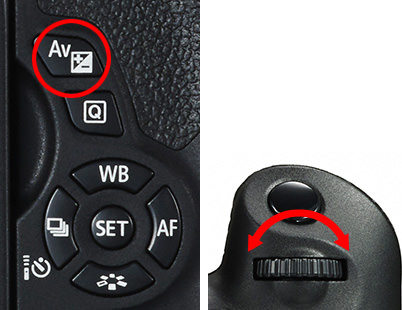Decorative lights are so pretty at night but it can be hard to recreate their sparkle in photographs. Here’s the technique for achieving just that—the secret is in the aperture! (Reported by: Teppei Kohno)

EOS 5D Mark II/ EF100mm f/2.8 Macro USM/ FL: 100mm/ Manual exposure (f/18, 5 sec, EV±0)/ ISO 400/ WB: Auto
Turn all the lights into starbursts!

Example 1:
EOS 760D/ EF-S18-55mm f/3.5-5.6 IS STM/ FL: 18mm (28.8mm equivalent)/ Manual exposure (f/16, 6 sec, EV+1)/ ISO 200/ WB: Auto
Shooting procedure
1: Set the mode to Aperture-priority AE.
2: Set to a higher f-number.
3: Increase the exposure compensation.
4: Use a tripod when composing the picture.
The trick to making all the decorative lights look like sparkling diamonds is actually quite simple—increase the f-number setting. If you use an aperture that is narrow enough, the image captured will have obvious rays of light extend out from each light source, making them appear like stars. This is known as the “starburst effect”.

Here is an enlarged view of the photo shown above. Each light has been turned into a tiny star.
How does this happen?
These light rays occur as a result of the lens aperture blades (plates which form the aperture hole). They are formed by the leakage of light from where the aperture blades overlap. Increasing the aperture value causes the leaked light to form into streaks, emphasizing the effect.
How to make your shot even better
Beautiful light rays can be produced with aperture values ranging from roughly f/11 to f/16. You can also increase the exposure compensation to make the image brighter, which makes the light rays brighter and more noticeable.
Because the aperture value is increased to capture images with light rays at night when there is low light, the shutter speed slows down significantly. To avoid camera shake, you should use a tripod to steady your camera when taking shots.
I increased my f-number, but my shot still doesn’t sparkle. Why?

Example 2:
EOS 760D/ EF-S18-55mm f/3.5-5.6 IS STM/ FL: 18mm (28.8mm equivalent)/ Manual exposure (f/8, 1 sec, EV±0)/ ISO 200/ WB: Auto
Although I set the aperture value to f/8 for the above shot, the entire image still does not seem to sparkle as much as the main image. There are 2 main reasons for this.
1. The light rays extending from each point light source were not captured. As the f-number I set was smaller than that required to create sufficient light rays, I was unable to produce the twinkling effect like that of shining stars. Increase your f-number and try again. It might take some trial and error!
2. The whole photo is dark. This happens because I did not increase the exposure compensation. Remember that by increasing the exposure compensation for scenery with very bright light sources, such as decorative lights, light rays can be captured more noticeably.
Remember: Use a tripod when photographing nightscapes

Shooting handheld at night already increases the chances of blurring from camera shake. When you increase the f-number to create starbursts, the shutter speed slows down further, which makes the image even more prone to camera shake. (Here’s a recap of exposure basics.) To counter that, shoot with a tripod. Use the self-timer so that you won’t inadvertently cause camera shake when you press the shutter button.
How to change the exposure compensation
1. Change the shooting mode.

Select either the P mode, Av mode, or the Tv mode.
2. Select the desired exposure compensation.

Turn the electronic dial while pressing the exposure compensation button. Positive compensation is carried out by turning the dial to the right and negative compensation is carried out by turning it to the left.
3. Check the exposure compensation value.

Check the set exposure compensation value from the rear LCD screen. Set the value again if it is not the intended effect.
For more night photography tips and ideas, check out the following articles:
In Focus: Night Photography
Nightscapes – Controlling Light for Fine Shots
EOS M10 Lesson 5: Ways to Capture Sparkling Christmas Lights
Architectural Photography #4: Photographing Buildings at Night
Receive the latest update on photography news, tips and tricks.
Be part of the SNAPSHOT Community.
Sign Up Now!
About the Author
Born in Tokyo in 1976, Kohno graduated with a Social Work degree from the Department of Sociology of Meiji Gakuin University, and apprenticed with photographer Masato Terauchi. He contributed to the first issue of photography magazine PHaT PHOTO and became an independent photographer after that, in 2003. The author of many books, Kohno not only shoots all sorts of commercial photographs, but also writes prolifically for camera and other magazines.


































